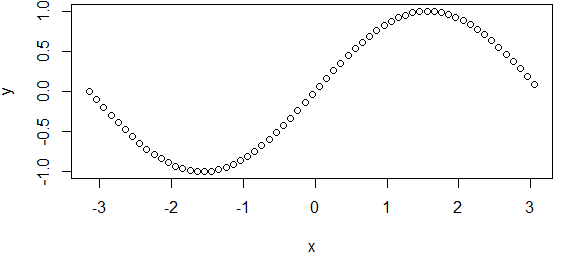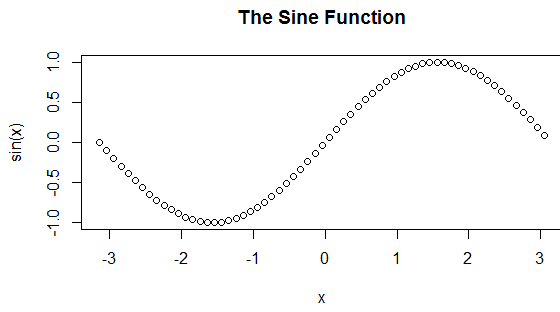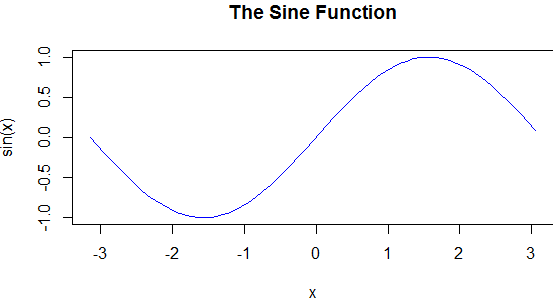R Plot Function is used to plot a graph in r programming in this r function we can vector and then we get a graph which is about magnitude vs index.
r plot function has so many method which is called according to the passed value to this r plot function.
For example we pass two vector plot(c(1,2),c(3,5)) and then this function plot a scatter graph for these two point.
here we plot graph for sine function form range -pi to pi as you can see in this picture.
<- pi="" plot="" pre="" seq="" sin="" x="">x <- seq(-pi,pi,0.1)
plot(x, sin(x))
 |
| R Plot Function |
Adding Titles and Labeling Axes to the r plot function
Here you can add title and label to the with parameter main and xlab and ylab two parameter for labeling x-axis and y-axis in plot graph.
plot(x, sin(x),
main="The Sine Function",
ylab="sin(x)") 
Labeling Axes to the r plot function
Changing Color and Plot Type for r function : -
Well you can change the color for plot type with the help of the argument type in r languages.
Check out the example for r plot with color:-
plot(x, sin(x),
main="The Sine Function",
ylab="sin(x)",
type="l",
col="blue") here we can define the color with col











